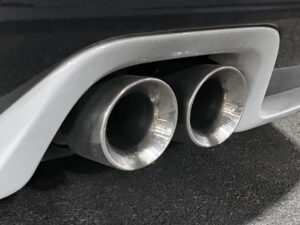The Truth About Hex Chrome
By Jaime Lopez
A recent LA Times article ignores the environmental injustice of these toxic air emissions
Gustavo Arellano accuses the California Air Resources Board (CARB) of “creating a solution in search of a problem” and of “missing the forest from the trees” as they attempt to phase out the use of Hexavalent Chromium. But the premises of his arguments are shallow–his environmental credentials seemingly stemming only from an overnight examination of one 235-page document. In a way, even Arellano’s emphasis on the lack of cancer data is an admission of ignorance, as if absence of evidence is evidence of absence. Additionally, he doesn’t seem to know that Hex Chrome’s potential threat is exacerbated by the cumulative impacts already faced by local Black and Brown residents.
I was raised in extreme poverty by an undocumented mother and stepfather near a disproportionate number of chrome platers in the City of Paramount, and I’m currently a PhD candidate at USC studying storytelling and environmental justice in Southeast Los Angeles. I feel a responsibility to my community in countering Arellano’s simplistic narrative of the health concerns in my city.
As I interview for professor positions in urban planning departments this year, I draw inspiration from my own embodied experience. Having experienced a benign tumor during high school and now working closely on projects with a local cancer-survivor, this particular issue hits home. In the census tract where I grew up, toxic releases are worse than 97% of the tracts in the entire state, according to the CalEnviroscreen website. In 2016, Hexavalent Chromium was discovered at 350 normal levels in Paramount.
Since then, I have served as a Planning Commissioner, have created two short documentaries heavily focusing on Hex Chrome, and am currently part of two environmental projects: an EPA funded citizen science community air monitoring project in Paramount and a recently awarded community engagement qualitative research project that I helped form with local residents, the Center for Environmental Health, and other researchers from USC and Cal Poly Pomona.

Hexavalent chromium is a compound that gives chromed products their shine. The plating process, which involves dunking parts in a chemical bath, produces airborne emissions 500 times more toxic than diesel exhaust.
Only Arellano knows whether he’s trying to appear hip to commercial and cultural styles and trends. He pays lip service to the dangers of hex chrome but seems more intent on discussing the shiny chrome on Chevrolet Impalas, Travis Scott music videos and Hollywood commercials. He spotlights self-serving quotes from industry employees, adding links to iconic Chevy models and award-winning chrome works by legendary artists. His “defense” of decorative chrome platers feels like a pseudo-social justice stance misleadingly characterizing chromers as the more urgent victims while being relatively dismissive of broader risks.
Residents living near chrome platers constitute a segment of what scholars have called “sacrifice zones”, where residents in areas such as Southeast Los Angeles are essentially sacrificed in the name of profitable heavy industrial activities. Conversely, Arellano frames chromers as those being sacrificed at the altar of “saying you’re saving the planet”. This is precisely why retired Cal Berkeley linguist George Lakeoff once wrote an article titled, “Why it Matters How We Frame the Environment”, framing has a critical impact on how a public comes to understand an issue and its stakeholders.
The title of Arellano’s piece, for instance, frames environmental justice proponents and regulators as “anti-chromers”. Essentially, such framing lazily pits those defending the public health of marginalized communities against the protagonists of Arellano’s curated Latino immigrant success stories instrumentalized in defense in the chrome industry.
Generally, Arellano makes an argument in supposed defense of the economy and its impact on Latinos but falls into the same line of reasoning professed by fossil fuel advocates who focus on the ubiquity of oil-made products as a way of justifying the deadly implications of its manufacturing process.
In following this logic, Arellano arguments are not only simplistic but operate as insults raised against decades of environmental activism and scholarship. It is as if his own conclusions drawn from one single document supersedes decades-long efforts by CARB, activists, and scholars to identify, quantify, and protect vulnerable populations in California from dangerous air toxins. Perhaps Arellano should do more than simply skim through one document before using his platform irresponsibly to mischaracterize an environmental injustice that some of us have been living and studying for years.
Jaime Lopez is a PhD candidate of Urban Planning at the University of Southern California (USC). He has served as a planning commissioner in the City of Paramount, has directed two short documentaries focused on environmental justice in Southeast Los Angeles, and his research focuses on environmental justice, participatory planning, storytelling, and media.
